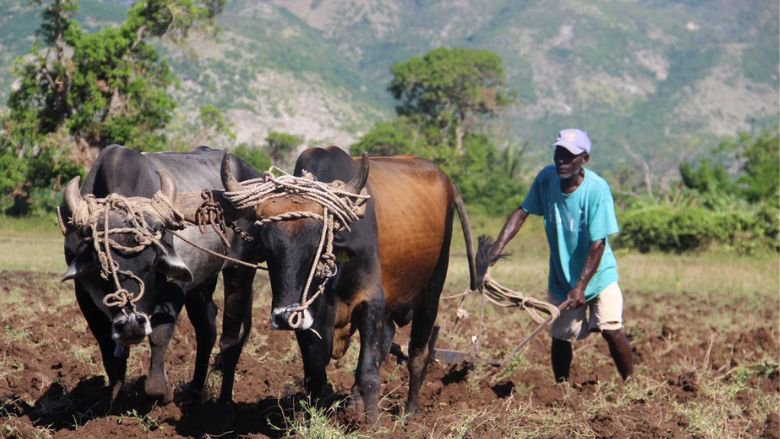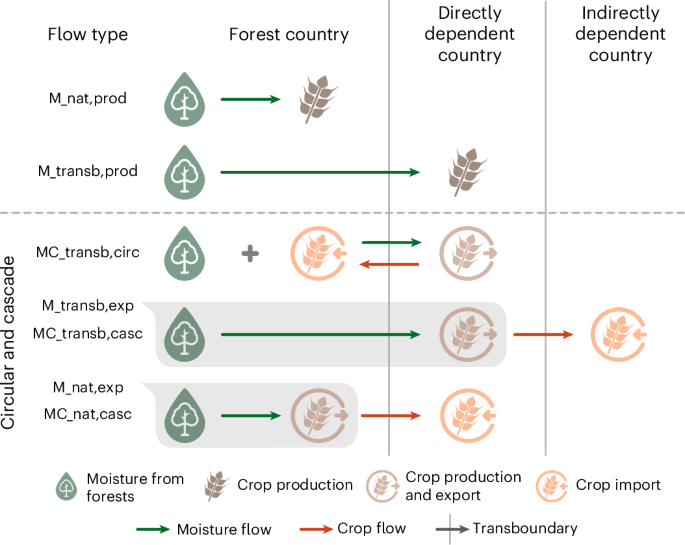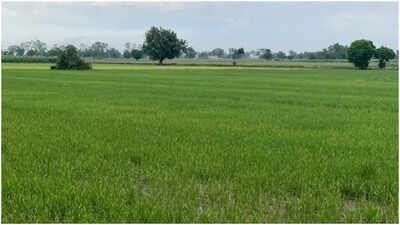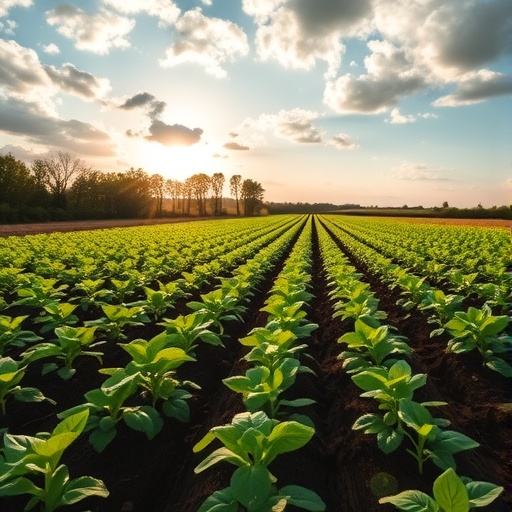Project Report: Enhancing Agricultural Resilience and Sustainability in Haiti
1.0 Introduction: Addressing Development Challenges through the SDG Framework
At the project’s inception, Haiti faced significant socio-economic and environmental challenges, directly corresponding to several United Nations Sustainable Development Goals (SDGs). The project was designed to address these critical issues:
- SDG 1 (No Poverty) & SDG 2 (Zero Hunger): The nation’s status as the poorest in the Latin America and Caribbean region was characterized by 27 percent of rural farmers living in extreme poverty and experiencing acute food insecurity. Their primary income source, agriculture, was undermined by chronic under-investment.
- SDG 13 (Climate Action) & SDG 15 (Life on Land): Unsustainable agricultural practices, driven by land pressure and economic hardship, coupled with the impact of natural disasters, led to severe watershed degradation and accelerated deforestation. This compromised the productive base and increased vulnerability to climate-related shocks.
2.0 Project Methodology and Strategic Approach
The World Bank Group implemented an integrated strategy combining sustainable land management, climate-resilient agriculture, and disaster risk reduction. This approach was tailored to the local agro-ecological context to advance key SDGs.
2.1 Community-Centric Implementation
The project prioritized active community participation to ensure sustainable outcomes. Key implementation methods included:
- Participatory Planning: Development of sub-watershed investment plans through community engagement, fostering local ownership and aligning with SDG 15 (Life on Land).
- Farmer Field Schools (FFS): Establishment of FFS to train farmers in improved agricultural technologies and landscape management practices. This capacity-building effort directly supports SDG 2 (Zero Hunger) and promotes gender inclusion, contributing to SDG 5 (Gender Equality).
- Subsidy and Grant Schemes: Provision of improved technical input packages and matching grants to enhance productivity and market access, directly targeting SDG 1 (No Poverty) and SDG 8 (Decent Work and Economic Growth).
3.0 Results and Contributions to Sustainable Development Goals
The project achieved significant results, exceeding initial targets and making measurable contributions across multiple SDGs.
3.1 Advancing Food Security and Economic Empowerment (SDG 1, SDG 2, SDG 5, SDG 8)
- A total of 4,267 farmers, exceeding the target by 42 percent, adopted improved agricultural technologies. This initiative included a strong focus on SDG 5 (Gender Equality), with women comprising 38% of participants.
- Market access was improved for over 80 percent of these farmers, enhancing their income-generating capacity in line with SDG 1 (No Poverty).
- Through 112 Farmer Field Schools, 2,800 farmers (38% women) received training, boosting local agricultural expertise.
- Access to markets for local products was further improved via 20 matching grants, benefiting 1,511 farmers, of whom 47% were female, marking a significant step for SDG 5.
3.2 Promoting Environmental Sustainability and Climate Action (SDG 6, SDG 13, SDG 15)
- Sustainable landscape management practices were implemented across 2,050 hectares, and participatory management plans were developed for four sub-watersheds, directly contributing to SDG 15 (Life on Land).
- A spatial decision support tool for climatic risk management, a key component of SDG 13 (Climate Action), was applied to 21,968 hectares.
- To enhance water security and resilience, 50 water tanks were constructed, benefiting 250 vulnerable households and supporting SDG 6 (Clean Water and Sanitation).
3.3 Emergency Response and Resilience Building (SDG 2, SDG 13)
- In response to the 2021 earthquake, a contingent emergency response component provided urgent inputs and services to 137,611 farmers.
- As part of this response, 20,968 farmers received climate-resilient crop varieties and seeds, reinforcing long-term food security and climate adaptation efforts in line with SDG 2 and SDG 13.
Analysis of Sustainable Development Goals (SDGs) in the Article
1. Which SDGs are addressed or connected to the issues highlighted in the article?
-
SDG 1: No Poverty
The article directly addresses this goal by stating that at the project’s start, “27 percent of rural farmers [were] in extreme poverty.” The project’s aim to “generate sustainable incomes” and improve market access for farmers is a direct response to this challenge.
-
SDG 2: Zero Hunger
This goal is central to the article, which highlights “acute food security” as a key problem. The project’s interventions, such as promoting “improved agricultural technology,” providing “climate-resilient crops varieties/seeds,” and distributing “urgent production inputs,” all contribute to ending hunger and improving food production.
-
SDG 5: Gender Equality
While not a primary challenge mentioned, the project’s results explicitly track and promote women’s involvement. The article reports the percentage of women participating in various activities, such as “38% women” among farmers adopting new technology and “47% female” beneficiaries of matching grants, indicating a focus on empowering women in agriculture.
-
SDG 6: Clean Water and Sanitation
The article connects to this goal by discussing the “severely degraded watersheds” and the project’s aim to improve “water retention capacity.” The construction of “50 water tanks” for vulnerable households and the development of “participatory plans” for sub-watersheds are direct actions toward better water resource management.
-
SDG 13: Climate Action
This goal is addressed through the project’s focus on building resilience to “natural disasters’ shocks” and “extreme weather.” The implementation of “climate-resilient agriculture,” “disaster risk reduction,” and a “spatial decision support tool for climatic risk prevention and management” are key strategies for climate action.
-
SDG 15: Life on Land
The article highlights severe environmental challenges like “degraded watersheds,” “accelerated deforestation,” and “soil erosion.” The project’s response, including implementing “sustainable landscape management practices” and promoting “climate-smart production and practices” on thousands of hectares, directly targets the restoration and sustainable use of terrestrial ecosystems.
2. What specific targets under those SDGs can be identified based on the article’s content?
- Target 1.5: Build the resilience of the poor and those in vulnerable situations and reduce their exposure and vulnerability to climate-related extreme events and other economic, social and environmental shocks and disasters. The project’s integrated approach combining “climate-resilient agriculture, and disaster risk reduction” directly supports this target by protecting communities from “floods and landslides.”
- Target 2.3: By 2030, double the agricultural productivity and incomes of small-scale food producers, in particular women… The project supports this by helping “4,267 farmers” adopt “improved agricultural technology” and ensuring “more than 80 percent of these farmers gained better access to markets.”
- Target 2.4: By 2030, ensure sustainable food production systems and implement resilient agricultural practices that increase productivity and production… The project achieves this by putting “2,050 hectares are under sustainable landscape management practices” and providing farmers with “climate-resilient crops varieties/seeds.”
- Target 5.a: Undertake reforms to give women equal rights to economic resources… The project contributes to this by providing “20 matching grants” that benefited “1,511 farmers (47% female),” improving their access to markets and economic resources.
- Target 6.5: By 2030, implement integrated water resources management at all levels… The development of “participatory plans” for “4 sub-watersheds” is a direct implementation of integrated water resource management at the local level.
- Target 13.1: Strengthen resilience and adaptive capacity to climate-related hazards and natural disasters in all countries. The article details the application of a “spatial decision support tool for climatic risk prevention and management” and the provision of emergency support and climate-resilient seeds in response to the 2021 earthquake, which directly strengthens resilience.
- Target 15.3: By 2030, combat desertification, restore degraded land and soil… and strive to achieve a land degradation-neutral world. The project’s efforts to address “soil erosion” and place “2,050 hectares under sustainable landscape management practices” are direct actions toward restoring degraded land.
3. Are there any indicators mentioned or implied in the article that can be used to measure progress towards the identified targets?
Yes, the “Results” section of the article provides several quantitative indicators that can be used to measure progress:
-
For SDG 1 & 2 (Poverty & Hunger):
- Number of farmers who adopted improved agricultural technology: 4,267.
- Percentage of farmers with better access to markets: >80%.
- Number of farmers who benefited from matching grants: 1,511.
- Number of farmers who received urgent production inputs: 137,611.
-
For SDG 5 (Gender Equality):
- Percentage of women among farmers adopting improved technology: 38%.
- Percentage of women participating in farmer field schools: 38%.
- Percentage of women among matching grant beneficiaries: 47%.
-
For SDG 6 (Clean Water):
- Number of sub-watersheds with participatory plans developed: 4.
- Number of water tanks built: 50.
- Number of households benefiting from new water tanks: 250.
-
For SDG 13 & 15 (Climate Action & Life on Land):
- Area under sustainable landscape management practices: 2,050 hectares.
- Area covered by a climatic risk prevention and management tool: 21,968 hectares.
- Number of farmers provided with climate-resilient crop varieties/seeds: 20,968.
4. Summary Table of SDGs, Targets, and Indicators
| SDGs | Targets | Indicators |
|---|---|---|
| SDG 1: No Poverty | 1.5: Build resilience of the poor to climate-related extreme events. | – Number of farmers with better market access (>80% of 4,267). – Number of farmers benefiting from matching grants (1,511). |
| SDG 2: Zero Hunger | 2.3: Double the agricultural productivity and incomes of small-scale food producers. 2.4: Ensure sustainable food production systems. |
– Number of farmers adopting improved agricultural technology (4,267). – Number of farmers receiving climate-resilient seeds (20,968). |
| SDG 5: Gender Equality | 5.a: Give women equal rights to economic resources. | – Percentage of women among farmers adopting new technology (38%). – Percentage of female beneficiaries of matching grants (47%). |
| SDG 6: Clean Water and Sanitation | 6.5: Implement integrated water resources management. | – Number of sub-watersheds with participatory plans (4). – Number of water tanks built (50). |
| SDG 13: Climate Action | 13.1: Strengthen resilience and adaptive capacity to climate-related hazards. | – Hectares covered by a climatic risk prevention tool (21,968). – Number of farmers provided with climate-resilient crops (20,968). |
| SDG 15: Life on Land | 15.3: Combat desertification, restore degraded land and soil. | – Hectares under sustainable landscape management practices (2,050). |
Source: worldbank.org







